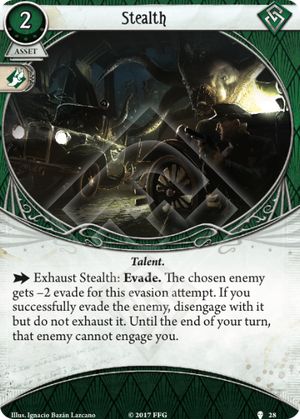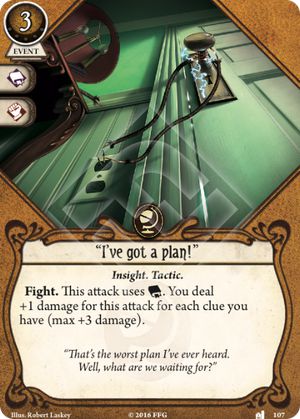
The upgraded Bandolier is a pretty nice card, the old version suffered from having a high cost for a minuscule bonus that doesn't actually contribute to winning a scenario but rather enables some very specific deck-tech. Spending 2 resources and an action to -allow- yourself to spend further actions and resources to deploy MORE assets, is'nt particularly useful, especially since 2 resources is quite a lot, considering that the assets filling your hand slots typically cost 2-6 resources themselves.
Bandolier's saving grace is the boost, it's exactly the kind of thing a combat character really needs. Whether you're Roland Banks or "Skids" O'Toole the boost helps combat horror treacheries like Rotting Remains and nasty stuff like Crypt Chill or Frozen in Fear. The additional hand slot is also surprisingly useful, suddently your fully setup hand plan might look something like this: Lightning Gun + 2xMagnifying Glass, Chicago Typewriter + Switchblade + Lockpicks, Shotgun + Switchblade + Flashlight, Old Hunting Rifle + Machete + Flashlight. The extra hand slot also makes deploying the whole build easier since there wont be any cases where you deploy backup weapons and gotta discard one when a 2-handed weapon comes into play, and more usefully, you can deploy two two-handed weapons simultaneously. I found the ability to get both my copies of a main weapon into play simultaneously just as useful as opening space for backups and/or clue-tools, not to mention the deckbuilding freedom that opens up when you can put 3 or 4 2-handers in a deck and not be redundant.
This upgrade doesn't get around Bandoliers core issue, an added cost and time investment to net benefits that don't serve to progress the scenario but are purely defensive or utilitarian. However, the static defense is certainly potent, the deckbuilding impact and increase to combat efficiency can really smooth out a babysitter or allow a focused fighter to contribute clues.
Frankly, I still think the card lacks an active role in beating a scenario, and 2xp (multiplied to 4 for the set, which is absolutely required) is a lot to ask when the plan is to get a bunch of high level weapons, but perhaps if your main concerns at that point are your ability to withstand horror then the Bandolier is your ideal next step. Personally, I think it could have done with an extra pip.




